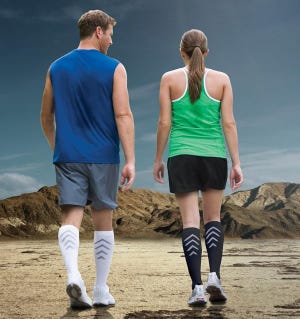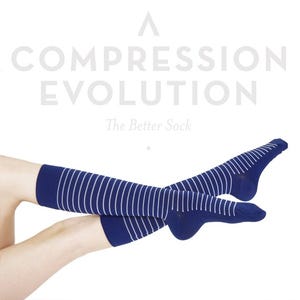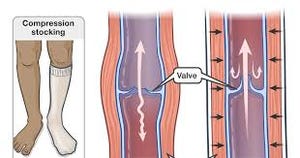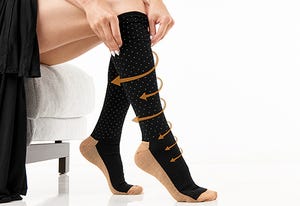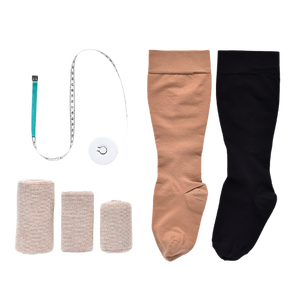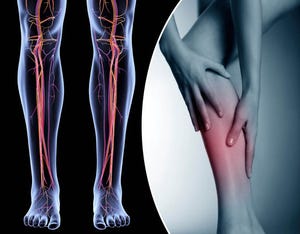What do compression sleeves do?
Compression sleeves have become increasingly popular in recent years, with people using them for a variety of reasons. These snug-fitting garments are designed to apply pressure to a specific area of the body, and they can be used for everything from athletic performance to medical treatment. In this article, we'll explore in more detail what compression sleeves do and how they can benefit you.
Compression sleeves are a popular type of garment worn by athletes, medical patients, and people with certain health conditions. These sleeves are designed to fit snugly around a specific area of the body. Examples of these areas include the arms, legs, and feet. The sleeves apply gentle pressure to that area.
The primary function of compression sleeves is to improve circulation and reduce inflammation. They apply pressure to help push blood and other fluids away from the area. This can reduce swelling and improve the delivery of oxygen and nutrients to the tissues. This increased circulation can also help to speed up the healing process for injuries and reduce muscle soreness after exercise.
Compression sleeves are commonly used by athletes to enhance their performance and prevent injuries. They can help to stabilize muscles and reduce vibrations during high-impact activities. This can help to reduce the risk of strains and sprains. Many athletes also use compression sleeves after a workout to reduce muscle soreness and promote recovery.
Compression sleeves are also used in the medical field to treat a variety of conditions. They can be used to improve circulation in people with diabetes. They can prevent blood clots in people who are bedridden or recovering from surgery. They can also reduce swelling and pain in people with lymphedema.
There are many different types of compression sleeves available, each designed for a specific purpose. Some are designed for use during exercise, while others are designed for medical use. Some are made from materials that are moisture-wicking and breathable, while others are designed to provide warmth or support.
Improved Circulation
One of the primary functions of compression sleeves is to improve circulation. When you wear a compression sleeve, it applies gentle pressure to the area of the body it covers. This pressure helps to push blood and other fluids away from the area and towards the heart. By doing so, it can improve circulation and promote the delivery of oxygen and nutrients to the tissues.
Improved circulation can have a number of benefits. For athletes, it can help to reduce fatigue and improve performance. By delivering more oxygen to the muscles, they can work harder and for longer periods of time. For people with certain medical conditions, improved circulation can help to reduce swelling and inflammation, and promote healing.
Reduced Swelling
Compression sleeves can also help to reduce swelling in the area they cover. When you apply pressure to a swollen area, it can help to push excess fluid out of the tissues and into the lymphatic system. This can help to reduce the size of the swelling and promote healing.
Compression sleeves are commonly used by people with conditions that cause swelling, such as lymphedema. Lymphedema is a condition that occurs when the lymphatic system is unable to properly drain excess fluid from the tissues. This can result in swelling, discomfort, and other symptoms. Compression sleeves can help to reduce swelling and promote the proper drainage of fluid from the affected area.
In addition to lymphedema, compression sleeves can also be used to reduce swelling in other areas of the body. For example, they can be used to reduce swelling in the legs and feet, which is common in people who are bedridden or spend long periods of time sitting or standing.
Reduced Muscle Soreness
Compression sleeves are also commonly used by athletes to reduce muscle soreness after a workout. When you exercise, your muscles undergo small tears and other forms of damage. This damage is what causes the soreness you feel after a workout.
Compression sleeves can help to reduce muscle soreness by improving circulation and reducing inflammation. By delivering more oxygen and nutrients to the muscles, they can promote healing and reduce the amount of soreness you feel.
Improved Athletic Performance
Compression sleeves are also commonly used by athletes to improve their performance. When you wear a compression sleeve, it can help to stabilize the muscles and reduce vibrations during high-impact activities. This can help to reduce the risk of strains and sprains, and improve overall athletic performance.
Compression sleeves can also help to prevent injury by promoting better form during exercise. By providing support to the muscles and joints, they can help to reduce the risk of injury and allow athletes to perform at their best.
Medical Uses
Compression sleeves are not just used by athletes, they are also commonly used in the medical field. There are a variety of medical conditions that can benefit from the use of compression sleeves. Here are a few examples:
Deep Vein Thrombosis (DVT)
Deep vein thrombosis (DVT) is a condition that occurs when a blood clot forms in a deep vein, usually in the legs. This condition can be very dangerous, as the blood clot can travel to the lungs and cause a pulmonary embolism.
Compression sleeves can be used to prevent DVT in people who are at risk. By applying pressure to the legs, they can help to improve circulation and reduce the risk of blood clots forming.
Diabetes
People with diabetes are at risk of developing circulation problems in their feet and legs. Compression sleeves can be used to improve circulation and reduce the risk of complications such as ulcers and infections.
Recovery from Surgery
Compression sleeves can be used to aid in recovery after surgery. They can help to reduce swelling and promote healing. Compression sleeves are commonly used after cosmetic procedures such as liposuction and breast augmentation, as well as after joint replacement surgery.

